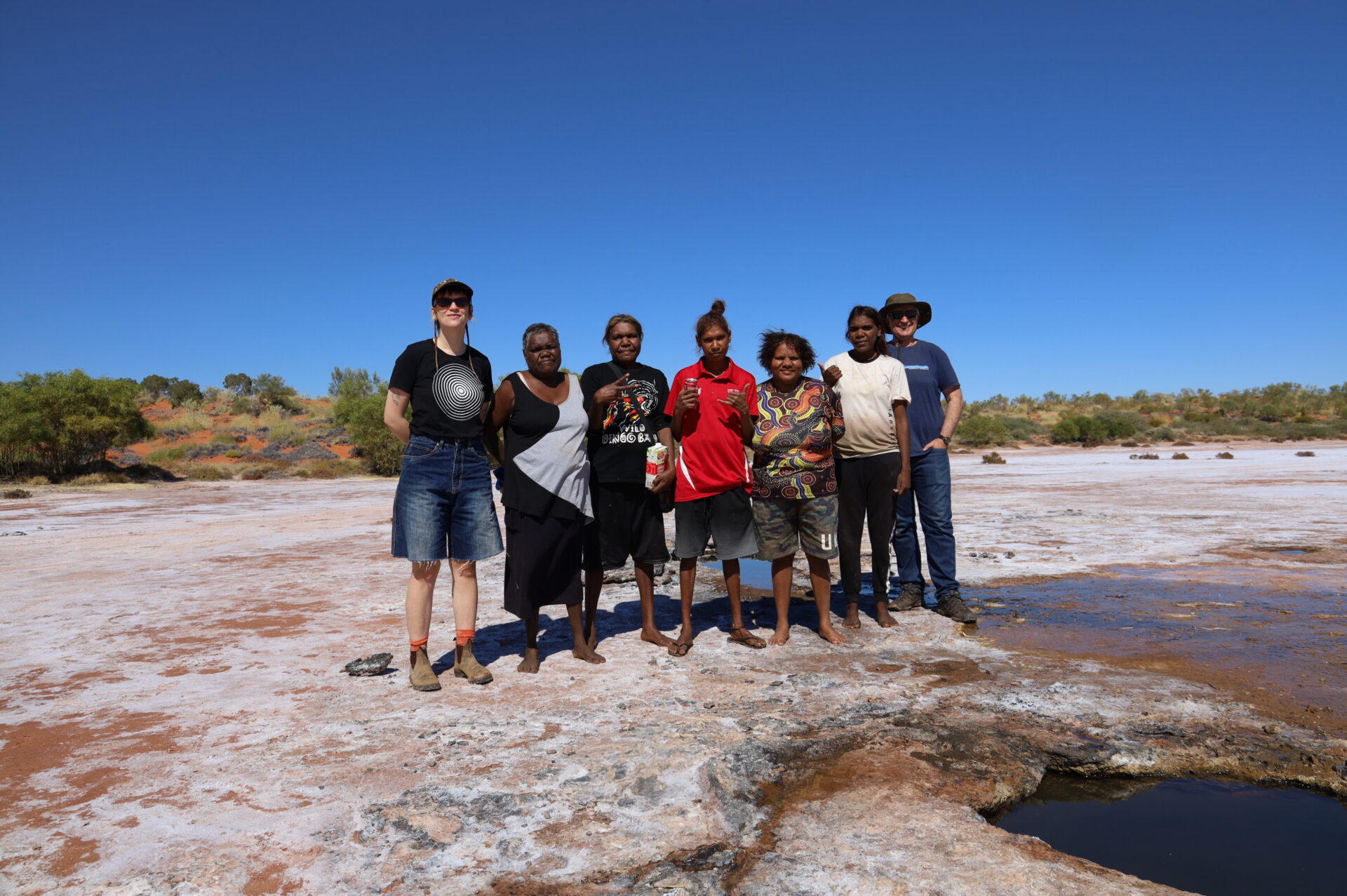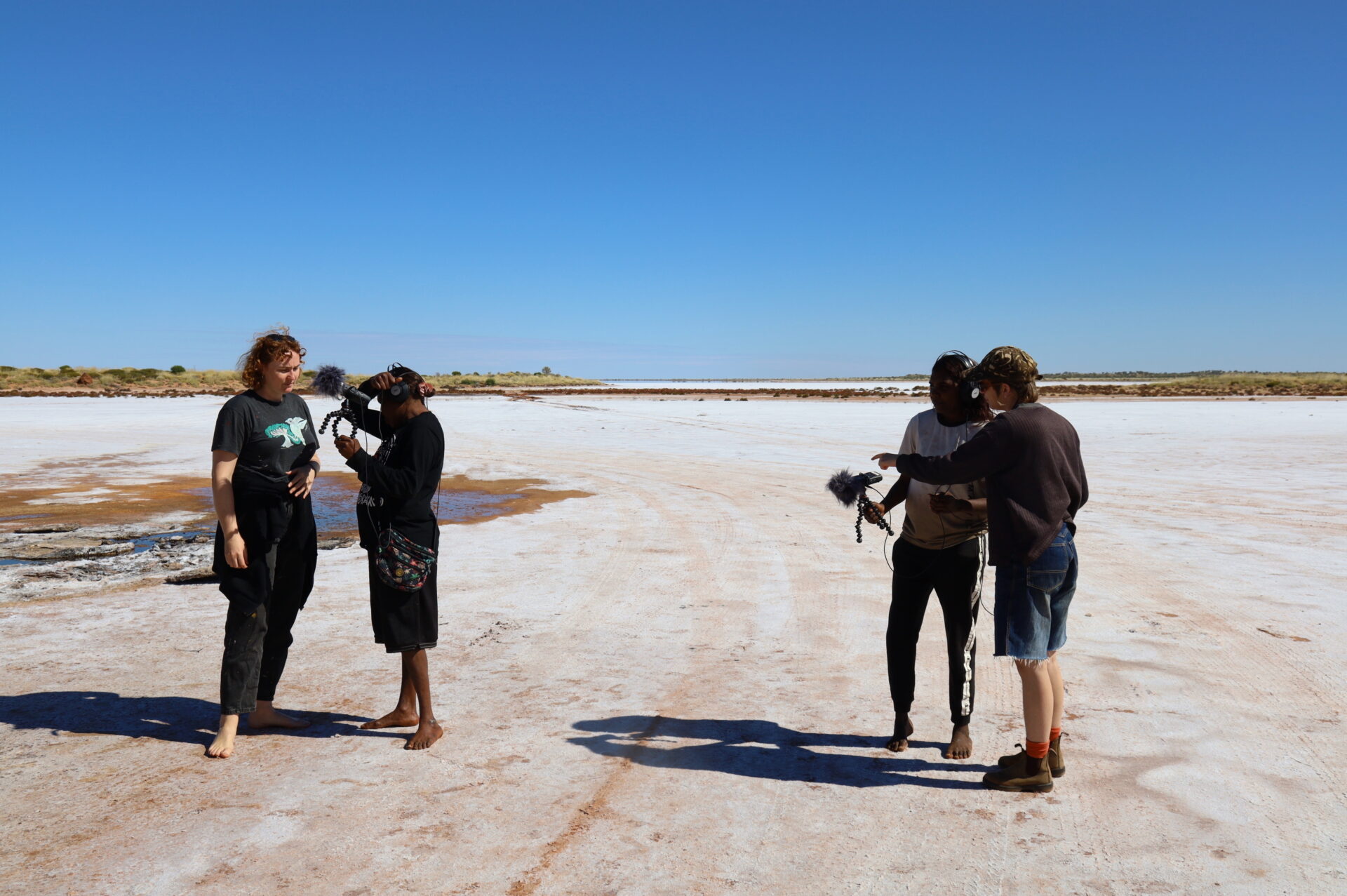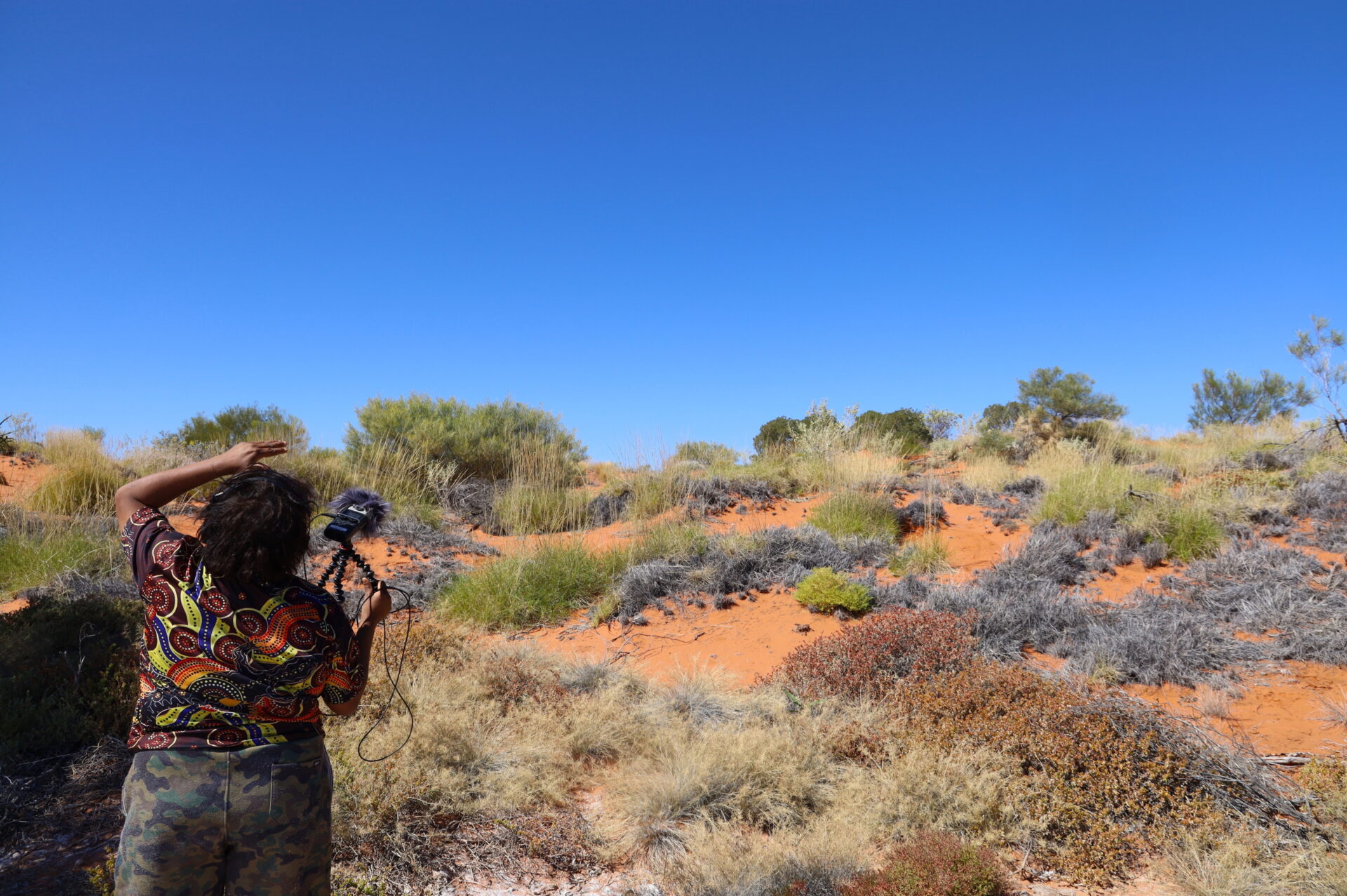

Kulininpalaju
(We Are Listening)
A Tura Partnership with Martumili Artists
Kulininpalaju (We Are Listening) is a long-term creative partnership between Tura and Martumili Artists, established in 2019. The project explores the power of collective listening and recording as cultural practice, connecting Martu artists and communities with Australian sound artists Philip Samartzis and Annika Moses.
Through on-Country collaboration, Tura and Martumili have developed a distinctive approach to intercultural sound art. Kulininpalaju uses sound as a way of sharing Country, supporting the transfer of knowledge between generations, and strengthening collective cultural wellbeing.
Hundreds of hours of field recordings captured with Martu artists now form the Kulininpalaju Sound Archive. Recordings were made across the communities of Parnngurr, Jigalong, Punmu, and Kunawarritji with over 29 Martu contributors. These sounds serve as an ongoing record of Country and its stories.
The Kulininpalaju Sound Archive continues to inspire new compositions, collaborations, and media projects, including an online platform designed to share recordings with those away from Country.
Listening to Martu Country reveals complex social, cultural, and environmental dynamics. Sound art becomes a means of documenting and reflecting on the interplay between climate, landscape, technology, and human experience, illuminating the deep interconnectedness of all things.

Kujungka Exhibition and Soundscape
Kujungka, meaning ‘all coming together as one’, is the culmination of three years of collaboration celebrating shared creativity and cultural connection. Presented by Martumili Artists and Kanyirninpa Jukurrpa (KJ) in partnership with Tura, the exhibition combines visual and sound works developed through Martumili and KJ’s joint programs.
The sound components of Kujungka feature compositions drawn from the Kulininpalaju Sound Archive, recorded during on-Country work in Punmu, Parnngurr, and Kunawarritji. These works reflect the deep ties between place, people, and sound.
The exhibition embodies the Martu value of collectivity, expressing how creativity emerges through collaboration and the recognition of connection across all things. It stands as a living representation of everyday Martu cultural practice.
The soundscape circulating within the Kujungka exhibition features a collection of recordings made with and by the communities of Parnpajinya, Jigalong, Parnngurr, Punmu, and Kunawarritji. These recordings have been collated over the past four years as part of the Kulininpalaju project, a long-term creative collaboration between Martumili Artists and Tura, which explores sound as a medium for sharing Country. Its production is informed by many conversations with people who shared knowledge, insights, and a deep curiosity about the sounds and spaces that occupy a vast stretch of land comprising one of Earth’s oldest blocks of continental crust dating back more than three billion years.
Underscoring the vivid expressions of landscapes, objects, animals and people, are sound recordings made of many of the locations represented in paint such as the springs and waterholes of Lake Dora, and the sand dunes, clay pans and spinifex that surround Punmu. Sounding across these distant places and their lively communities are the voices of excited children, troop carriers, dogs barking, and windmills and fences creaking and rattling with each gust of wind. Kujungka is the coming together of all the natural and human elements that shape the experience of space and place.
The widely distributed Martu community populates a rugged landscape comprising abundant wildlife and natural attributes shaped by extreme climate and weather. While the days are marked by the sound of human activity, the nights are eerily filled with the call of frogs and insects, and the high frequency pulse of the leaf nosed bat. At sunrise assorted birdcall penetrates the expansive desert landscape including the wedge tail eagle, whistling kite, Australian reed warbler, spinifex pigeon, finch and little grassbird. While the vista of red sand, rocky domes, spinifex, and ghost gums suggest little has changed, the amorphous sound of heavy industry, and the succession of vehicles and trains moving across the horizon are indicators of a transformed landscape.
Sound is ever present and available through the materials, people and spaces that make up this beautiful place. Tracing the many sounds of the Pilbara provides a way to consider complex social and environmental dynamics and interactions in the production of new narratives and access points. Sound artists play an increasingly vital role in observing and recording the tension between climate, landscape, technology, and human action, to demonstrate the interconnectedness of things. The recordings afford audiences a chance to experience remote and remarkable places and their communities through different aesthetic forms, and immersive and affective encounters.

Philip Samartzis
Philip Samartzis is a sound artist, scholar, and curator with a specific interest in the social and environmental conditions informing remote wilderness regions and their communities. His art practice is based on deep fieldwork where he deploys complex sound recording technology to capture natural, anthropogenic, and geophysical forces. The recordings are used within exhibition and performance to demonstrate the transformative effects of sound within a contemporary art context. He is particularly interested in concepts of perception, immersion, and embodiment to provide audiences with sophisticated encounters of space and place.

Annika Moses
Annika is a sound artist with an eclectic and genre-diverse practice. She performs under the monikers Nika Mo, Great Statue, and contributes to the local ecology of experimental sound both as an individual and as a co-director of Tone List label. Annika facilitates sound-based creative projects with Martu, Gija, Bunuba, Gooniyandi and Walmatjarri language groups.
Martumili Artists was established by Martu people living in the communities of Parnpajinya (Newman), Jigalong, Parnngurr, Punmu, Kunawarritji, Irrungadji and Warralong, and it draws on strong influences of aboriginal art history. After long and cautious observation of other desert artists’ experiences of the art market.
The artists and their families are the traditional custodians of vast stretches of the Great Sandy, Little Sandy and Gibson Deserts as well as the Karlamilyi (Rudall River) area.
Kulininpalaju is a long-term creative program partnership between Tura and Martumili Artists (MMA), supported by BHP and RMIT School of Art. Tura’s ongoing programs are supported by the Australian Government through Creative Australia, its principal arts investment and advisory body and the Western Australian State Government.
Tura and the artists thank the communities that have partnered with us and the Martu and Nyiyaparli people for their ongoing care, custodianship and connection to the land. Thank you to the Elders and community members who have welcomed us onto Country.
Images by Anna Spencer.













